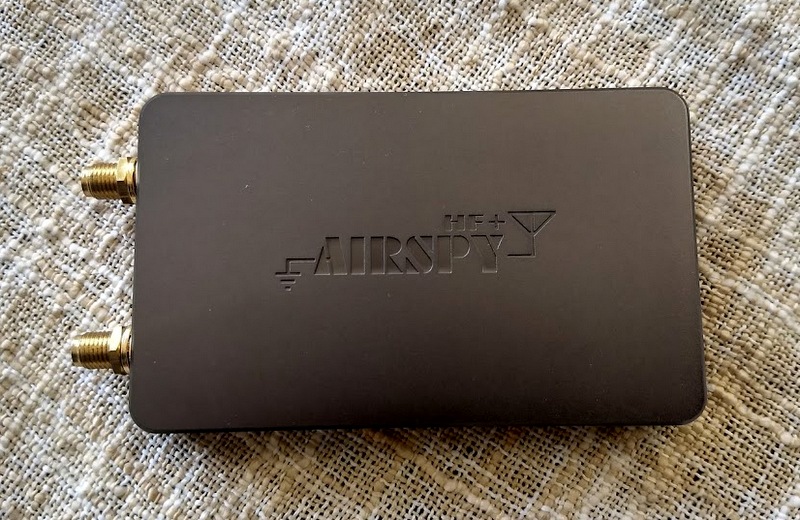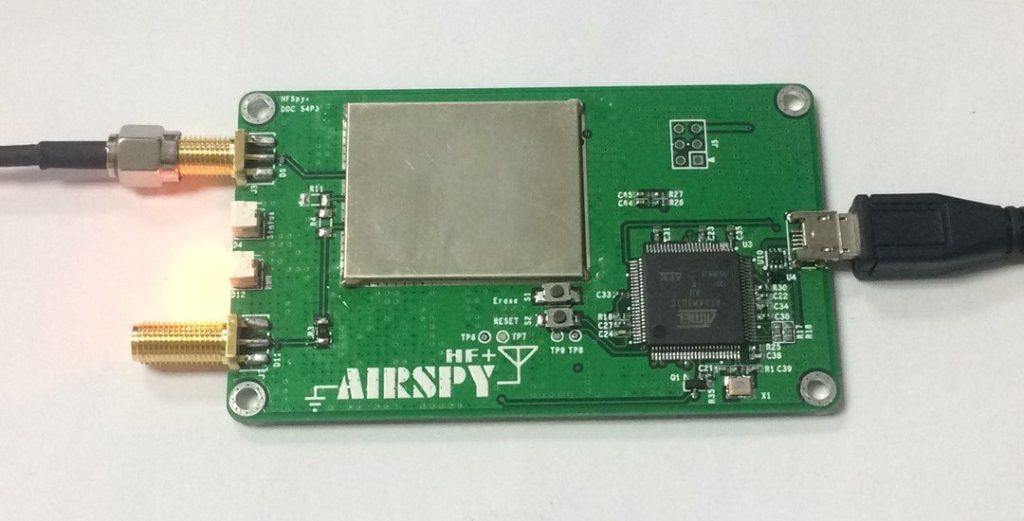 After SWling Post contributor, Guy Atkins, posted the survey results of his excellent Elad FDM-S2 vs AirSpy HF+ weak signal comparison, I received a few questions about the AirSpy HF+ “R3 Bypass” modification Guy mentioned in his post.
After SWling Post contributor, Guy Atkins, posted the survey results of his excellent Elad FDM-S2 vs AirSpy HF+ weak signal comparison, I received a few questions about the AirSpy HF+ “R3 Bypass” modification Guy mentioned in his post.
Guy has not yet performed the modification on his HF+–neither have I–but he points out that others have noted it: “significantly boosts sensitivity of the HF+ from longwave up to about 15 MHz, without any noted overload issues.”
I reached out to AirSpy president, Youssef Touil, for a little more insight about this modification. Youssef replied:
During the early phases of the design R3 was a place holder for a 0 ohms resistor that allows experimenters to customize the input impedance. For example:
- A 300 pF capacitor will naturally filter the LW/MW bands for better performance in the HAM bands
- A 10µH inductor would allow the use of electrically short antennas (E-Field probes) for MW and LW
- A short (or high value capacitor) would get you the nominal 50 ohms impedance over the entire band, but then it’s the responsibility of the user to make sure his antenna has the right gain at the right band
- A custom filter can also be inserted between the SMA and the tuner block if so desired.
R3 and the nearby resistors have been intentionally left outside of the RF shield, and their size was picked to be big enough to allow anyone to play with them. You will notice the size difference with the rest of the components.
In general, unless one knows what he’s doing, it’s not recommended to alter a working system. “If it’s working, don’t fix it”. But, we are hobbyists, and not doing so leaves an uncomfortable feeling of something unachieved. Most brands addressing the hobby market leave some tweaks and even label them in the PCB.
The main purpose of the HF+ is the best possible performance on HF at an affordable price. This is to incite HAMs to get started with this wonderful technology while using an SDR that isn’t worse than their existing analog rig.
The MW/LW/VLF crowd may have slightly different requirements, but that can be addressed by shorting a resistor.
Regards,
Youssef Touil
Thank you, Youssef, for replying to my inquiry so quickly and thoroughly.
No doubt, I too will eventually modify R3–it’s very difficult not to experiment, especially when a product was designed with the experimenter in mind.
I really feel like AirSpy has knocked it out of the ballpark with the HF+. For those of us primarily concerned with HF performance, this SDR is very hard to beat–especially at its $199 price point!


Most often I see the recommendation of 1nF across R3 to improve reception of VLF (e.g. SAQ on 17kHz) but that doesn’t really make sense if we’re talking about it being in series with a 50R input.
What is R3 at the moment?
What is the correct recommendation for good reception down to about 9kHz ?
Thomas, thanks for being proactive and going right to the source–AirSpy’s Youssef! I think this SDR is perfectly positioned as a high value receiver for experimenters of all types. Many manufacturers try to shield the products from prying eyes and tinkerers (even those sufficiently skilled to do basic mods), but I commend AirSpy on taking the road less traveled.
As you know I have a pair of these receivers. The R3 bypass is a perfect opportunity for me to directly compare a stock versus modified HF+ on lower shortwave, medium wave, and LF in my suburban RF jungle. I think I see another SWLing Post article around the bend… :^)
Woo hoo!!!! What an excellent comparison that would be, Guy!
Out of curiosity, what is your SDR app of choice for the HF+?
Cheers,
Thomas
Hi Thomas, I’ve been a long-time fan of the simplicity of HDSDR. It works well with the HF+, *however*… after taking the time to learn my way around SDR-Console V3, I prefer that software now. It’s recording scheduler is extremely flexible and quick to set up, even for a complicated recording sked through the evening for MW captures.
I also like the various configurations such as being able to set the sharpness of the filters (something I missed from the Perseus software). For wider filters I keep the slopes less steep for better audio, and sharpen them up for narrow DXing bandwidths. Also, SDR-Console V3 is very easy for starting a 2nd instance of the program if you want to run two SDR radios (physical SDRs, not the virtual receivers that V3 is also well known for).
I have yet to use V3’s data analyzer module, which clearly offers a powerful way to manage large amounts of signal captures when going through an evening full of DX recordings. This is something I’d only seen before in the medium wave-centric program Jaguar (for use with Perseus SDR only).
It’s hard to believe that this polished SDR-Console V3 program is still in beta! Simon Brown hopes to release the production version in March.
There are different features I like in various programs… I wish I could combine features of my choosing into the one “SDR software to rule them all”.
Very interesting to know the difference on 3-18MHz where I spend the most of time listen to.
Please keep us updated!
Thank you